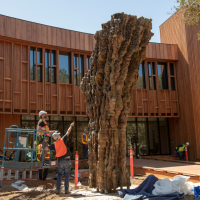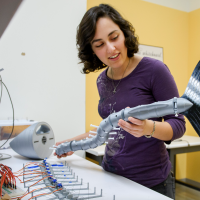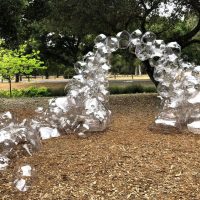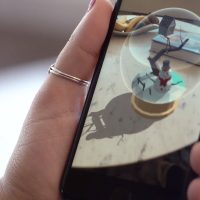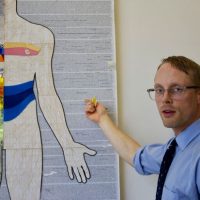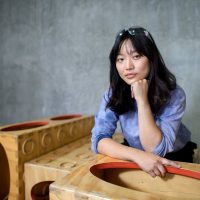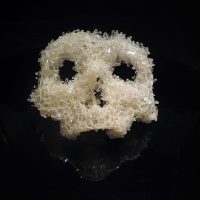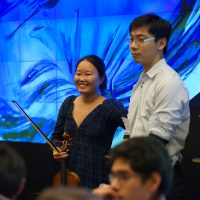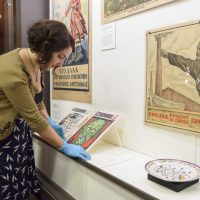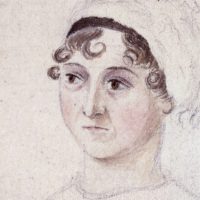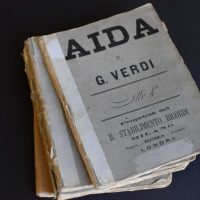Interdisciplinary Approach
Sculpture installed at Stanford University’s Denning House anchors new art collection
The 17-foot bronze sculpture is by Ursula von Rydingsvard, who will visit campus next month for a formal dedication of the artwork and to speak with students.When the inaugural cohort of Knight-Hennessy Scholars arrive to Stanford, they will be greeted by a new sculpture in front of Denning House, their program’s new home. The sculpture, MOCNA, by Ursula von Rydingsvard, was commissioned as the first piece in Denning House’s art collection, which plans to acquire one piece every year from emerging and established…
Read MoreNew exhibition at the Hoover Institution resurfaces a forgotten tabloid from the Vietnam War
A new exhibition at the Hoover Institution highlights Overseas Weekly, a civilian-run, women-led newspaper for American GIs abroad that defied top military brass and defended freedom of the press during the Korean and Vietnam wars.For the past 40 years, a Stanford alumna’s journalistic legacy from the Korean and Vietnam wars has sat forgotten in musty boxes in a basement in Sweden. Overseeing Overseas Weekly’s Pacific edition was Ann Bryan, the only female editor in chief in Saigon. She successfully sued the Department of Defense to lift a ban that prohibited…
Read MoreScience students make art to reflect on their time at Stanford
Projects in The Senior Reflection mix science with art. They have included documentaries, sculptures and performances and expressed students’ views on nature, health and personal experiences.Nibbling on petite samplings of quail, students in The Senior Reflection excitedly consider the acorn porridge and debate about the level of detail the chef – their classmate Alex Nguyen-Phuc, ’18 – should include in a printed menu to accompany the final meal. Although the class has taken on a temporary air of fine dining, it is…
Read MoreNebulate: an installation by students of Stanford’s Architectural Design Program
Installed in front of the Anderson Collection, Nebulate‘s structure is comprised of plastic bubbles of varying sizes, assembled to form a translucent, cloud-like mass. Architectural Design Program students explored how surface deformation, through dimpling and curvature, increased the strength of the panel. The final form embodies a viral mass upon its environment as it ebbs and…
Read MoreStanford senior and university VR club co-founder creates pioneering augmented reality film with fellow undergraduate
Max Korman believes that new augmented reality platforms represent a paradigm shift in how people will tell stories and create art in the future.Stanford undergraduates Max Korman, ’18, and Khoi Le, ’20, launched what may be the world’s first augmented reality narrative film. And they did it using their mobile phones. Snowbird is a 3D-animated short movie about porcelain creatures that come to life in a snow globe. (Image credit: Courtesy of Max Korman) Augmented reality (AR) is a…
Read MoreStanford student’s investigation reveals images in Diebenkorn painting
Richard Diebenkorn's 'Window' is the centerpiece of a new interactive exhibition at the Cantor Arts Center. The exhibit reveals hidden images beneath the painting found by Stanford student Katherine Van Kirk.Stanford student Katherine Van Kirk, ’19, has paired modern technology with old-fashioned detective work to reveal images hidden beneath the surface of artist Richard Diebenkorn’s painting Window (1967). Van Kirk discovered multiple compositions hidden below Window’s surface that date to the mid-1950s and ‘60s, when Diebenkorn was a leader of the Bay Area Figurative movement. These earlier compositions…
Read MoreMixed-media mosaics of the human body, inspired by Frankenstein
Eight-foot-tall mosaic monsters lay on top of the complete text of Mary Shelley’s Gothic novel about the unintended consequences of heedless scientific ambition.Third-year medical student Nick Love, PhD, combined his passion for art, literature and medicine in creating an art exhibit at the Li Ka Shing Center for Learning and Knowledge that commemorates the 200th anniversary of Mary Shelley’s novel Frankenstein. While the fictional Dr. Frankenstein stitched his monster together from cadaver parts, Love built his monsters with plastic,…
Read MoreNew Stanford student group bridges the arts, sciences and engineering
The group’s first art exhibition reflects knowledge-gathering and knowledge-making that are hallmarks of the university.When two students saw more division than unity between the different academic disciplines on Stanford’s campus, they decided to build a community and call it ArtX. Katherine Yang is the co-founder of the ArtX student organization. (Image credit: L.A. Cicero) Launched in 2017 by Stanford students Ramin Ahmari, BS ’18 and MS ’18, and Katherine Yang,…
Read MoreHumanity, technology join hands in Life/Art/Science/Tech Festival at SLAC
Part of Stanford's celebration of Frankenstein@200, the fifth LAST Festival brings together artists and scientists for two days of exhibitions and talks that ponder the growing intersections of man and machine.In the sculpture Feast of Eternity, salt crystals form delicate patterns along a 3D printed lattice that mimics the growth of stem cells to create bone. The hauntingly beautiful object resembling a human skull was designed by bioartist Amy Karle with the idea of “healing and enhancing a future body.” Karle uses medical technologies in…
Read MoreNeuroscience and music: A conversation with opera singer Renée Fleming
About a month before she opens on Broadway in the revival of Rodgers and Hammerstein’s Carousel, Renée Fleming is sitting in a broadcast booth talking to me about neuroscience and music. I’m able to grab time with the celebrated soprano to discuss Sound Health: Music and the Mind, a collaboration between the Kennedy Center, the National Institutes of Health, and the National Endowment for the Arts,…
Read MoreScience meets art at Stanford
Science and art are often regarded as distinct – either a person can’t be serious about both or an interest in one must relate somehow to work in the other. In reality, many scientists participate in and produce art at all levels and in every medium. Here are just a few of these people –…
Read MoreStanford community participates in intuitive/rational creative exercise
Artist and lecturer Pamela Davis Kivelson conducts a group draw.The intersection of science, music, art and improvisation has long fascinated experimental artist Pamela Davis Kivelson. Her latest foray into the busy intersection – Drawing with Gravitational Waves – reaches out of this world. Video by Kurt Hickman Artist Pamela Davis Kivelson created a participatory performance piece with violinist and scientist Lucy Liuxuan Zhang and creative coder…
Read MoreNew exhibition at Hoover Institution and Cantor Arts Center marks centenary of 1917 Russian Revolution
A joint exhibition at the Hoover Institution Library & Archives and the Cantor Arts Center highlights Stanford’s rich collections of materials on the history of late imperial and early Soviet Russia.Drafts of the last Russian czar’s abdication letter, painted portraits of Russian rulers from the 18th and 19th centuries, photographs of massive street demonstrations in Petrograd and Moscow in 1917, and early Soviet-era propaganda posters – these are just some of the artifacts on display at the Hoover Institution Library & Archives and the Cantor Arts Center as part…
Read MoreStanford dance class brings performance to the Anderson Collection
Students in Stanford’s dance improvisation lab take their inspiration from The Anderson Collection at Stanford.The latest Dance Improv Strategies Lab taught students that performance can happen anywhere at anytime. It could be at a theater or dance hall, or a less traditional venue like a museum or even a city street. For their final project, students chose any area in or around the Anderson Collection at Stanford University and…
Read MoreStanford literary scholars reflect on Jane Austen’s legacy
English Professor Alex Woloch and two doctoral students discuss author Jane Austen’s writing style and why her novels still dominate literary and popular culture 200 years after her death.Two centuries after Jane Austen’s death, the early 19th-century English author’s words persist in our culture. This drawing of Jane Austen was made by her sister, Cassandra, around 1810. (Image credit: National Portrait Gallery, London) Austen, who died on July 18, 1817, at 41, is known for her six completed novels, among them the highly adapted Pride…
Read MoreStanford Libraries’ rare score of Giuseppe Verdi’s opera Aida provides clues to the past
The 1876 manuscript is believed to be the only surviving score from a performance conducted by Italian composer Giuseppe Verdi and presents a unique research opportunity for historians and musicologists.A rare, orchestral score of Italian composer Giuseppe Verdi’s opera Aida has become a valuable source of instruction and inspiration for Stanford scholars. The handwritten manuscript, used in Aida’s Paris premiere in 1876, appears to be the earliest surviving copy of the famous opera’s full score – and the only surviving score from a performance…
Read More
